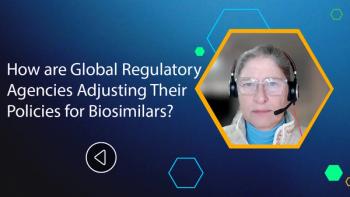
England's Cancer Drug Fund Conundrum
Leela Barham looks at some of the questions that still need to be asked of England's controversial Cancer Drug Fund.
Back in October 2014 I asked
The fund is controversial because it singles out cancer, and not only that, but English cancer patients only, reflecting the devolved healthcare of the UK. The ring-fenced fund covers medicines that have been rejected by the National Institute for Health and Care Excellence (NICE), not yet appraised by them, or won’t be considered at all by NICE. So far over 60,000 patients have benefitted from the fund since 2010. Critics
The fund originally started small; £50 million ($75.8m) in an interim fund in 2010, moving to £200m per year before reaching £280 million ($424.4m) for 2014/15. Now it’s going up to
The fund was a political fix, a way to soften the blow of so many NICE ‘no’s’ to cancer medicines. The fix worked for a while, because the fund was underspent and it was easy to ignore those who pointed out that it was unethical for selection cancer patients over others, undermined NICE, introduced the risk of gaming, gave little incentive for lower prices, and fails to address underlying problems.
With the number of drugs, number of patients, and some prices being high, the fund was inevitably going to become overspent. Some, such as the British Oncology Pharmacy Association (BOPA) predicted that early on, it just took some time to come through.
The political fix has however become increasingly fragile. Fifty-nine of the 84 indications that were on the list in December will stay on, the remainder dropped. Patient groups are angry. Pharma companies are ‘outraged’ and intend to appeal. NHS England say that this means there’s headroom for new medicines, adding Panitumumab in bowel cancer, and Ibrutinib in mantle cell lymphoma and Ibrutinib for chronic myeloid leukaemia. Headlines about the latest CDF decisions abound; some supportive, most against – probably not comfortable for the Conservatives who put the fund forward the fund in their Manifesto in the run up to the last General Election.
There are questions that still need to be addressed: What happens to those newly diagnosed patients who can’t access a medicine previously funded, will they be able to get it funded through the exceptional route, pay privately, or go without? Just how does the CDF work when there is an affordability guarantee for NHS spend on branded medicines in the 2014 PPRS? Where are the PPRS payments, worth millions, going? What ever happened to the CDF audit? Did NICE get their decisions right or wrong based on what’s really happened to English cancer patients? And given a General Election in May 2015, will a new Government be brave enough to get rid of the fund and get on with improving NICE, and companies get on with improving the efficiency of their R&D and offer fair prices?
Leela Barham is an independent health economist. You can find out more about on her
Newsletter
Lead with insight with the Pharmaceutical Executive newsletter, featuring strategic analysis, leadership trends, and market intelligence for biopharma decision-makers.





